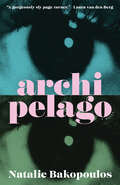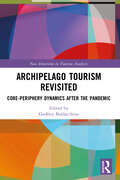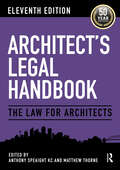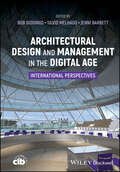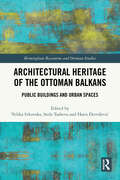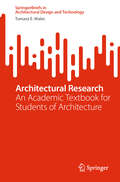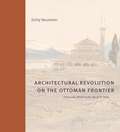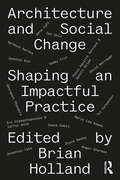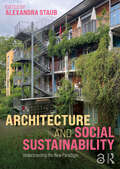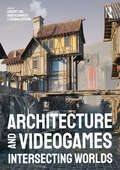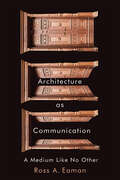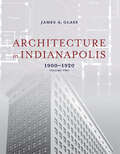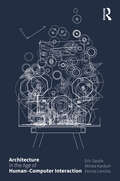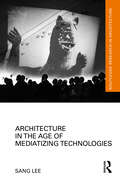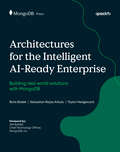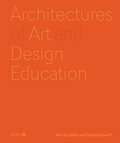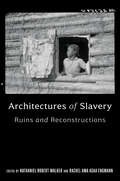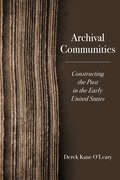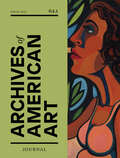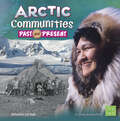- Table View
- List View
Archipelago
by Natalie BakopoulosNatalie Bakopoulos’s Archipelago is a striking, haunting novel that offers meditations on the slippery borders of nations, languages, middle age, and the self. Along the way to a translation writing residency on the Dalmatian coast, Archipelago’s unnamed narrator has an unsettling, aggressive encounter with a man on a ferry, which sets off a series of strange events. At the residency, she reunites with Luka, an old friend who seems to have included a version of her in his novel. They strike up a romantic relationship as she continues her translation work. The hazy summer stretches on until, after a sudden shift, she embarks upon an impulsive road trip back to Greece, crossing borders. Spare and lyrical, with subversions of the Odyssey and its singular Ithaca, Archipelago charts a wending journey back to the narrator’s family house—not simply back to a self and home, but beyond it.
Archipelago Tourism Revisited: Core-Periphery Dynamics after the Pandemic (New Directions in Tourism Analysis)
by Godfrey BaldacchinoThis timely and innovative book explores the dynamics of inter-island/island-island tourism – also known as archipelago tourism – on the cusp of the post-pandemic epoch.Embellished with illustrative maps and diagrams, the volume examines what novel approaches have been developed, if at all, so as not to repeat past mistakes, and nurture a more sustainable, 'island tourism' business model. It looks at how the political-economic relationship between main and outer islands changed during the pandemic and, if so, whether this shift has had a bearing on current tourism policy. The book also explores how these and other changes are reflected in how: islands are branded; island destinations are marketed; and island transport logistics play out. An array of archipelagos of varying sizes and locations is explored, assuring a global perspective. The book furthers our understanding of core-periphery dynamics in archipelago tourism.The volume will be of interest to students, researchers, policy makers and academics in the fields of tourism policy and planning, sustainability, island studies and development studies.
Architect's Legal Handbook: The Law for Architects
by Anthony Speaight Matthew ThorneCelebrating 50 years since it was first published, the Architect’s Legal Handbook has been the most widely used reference on the law for practicing architects, and the established textbook on law for architectural students. Since the last edition of this book in 2021, unprecedented change has occurred in the construction sector. The withdrawal of the United Kingdom from the European Union has ushered in changes to legislation in a wide range of areas. The tragic fire at Grenfell Tower in June 2017 and the deficiencies in design, construction, and regulation within the sector that were revealed as a result have given rise to major changes in the way projects are now carried out. An overhaul of the Building Regulations and the creation of a new Building Safety Regulator are only some of the ways in which the landscape has changed. This eleventh edition features all the latest developments in the law which affect an architect’s work, as well as providing comprehensive coverage of relevant UK law topics. Key highlights of this edition include: A new chapter has been added to cover the statutory framework for building safety (Chapter 9), which is complemented by a wholly updated chapter on construction regulation in England and Wales (Chapter 10). The chapter on public procurement law (Chapter 14) has also been entirely rewritten to focus on the Public Procurement Act 2023 and related regulations, following Brexit. New suites of standard contract forms have, since the last edition, been issued. These have seen substantial changes with chapters on JCT 2024 (Chapter 18) and the latest NEC4 forms (Chapter 19), together with wider updates to the chapters on FIDIC (Chapter 20) and other forms of contract (Chapter 21). A revised chapter on architects’ contracts with clients covering the RIBA Professional Services Contract 2024 (Chapter 37). A new section on novations in the chapter on the English Law of Contract (Chapter 2). The Architect’s Legal Handbook is the essential legal reference work for all architects and students of architecture.
Architecting Resilient Systems: Accident Avoidance And Survival And Recovery From Disruptions (Wiley Series In Systems Engineering And Management Ser. #66)
by Scott JacksonA comprehensive text that investigates a systematic approach to handling the design of resilient systems Resilient systems are an essential bulwark to enable the capability of a system against unprecedented adversities. Systems may include transportation, such as aircraft and rail, power systems, and urban infrastructure. Resilience may enable the preservation of physical assets and human lives. It can also require architectural restructuring of the system itself or simple measures, such an increase in design margin. Architecting Resilient Systems creates a comprehensive list of design principles for creating systems where resilience is essential. With a detailed approach to both these general principles and their practical applications, it permits the creation and management of resilient systems in virtually any key area or industry. Richly supported with case evidence and fully updated to reflect the latest research and best practice, it’s a critical tool in the fight against potential societal collapse. Readers of the second edition of Architecting Resilient Systems will also find: Numerous case studies including Apollo 11 and US Airways Flight 1549Detailed discussion of design principles including drift protection, repairability, loose coupling, and more Supporting chapters on resilience architecting and infrastructure Architecting Resilient Systems is ideal for professionals working in industry responsible for systems design and architecting as well as for undergraduate and graduate students studying systems engineering courses.
Architectural Design and Management in the Digital Age: International Perspectives
by Bob Giddings Silvio Melhado Jenni BarrettCritical appraisal of architectural design and management in the digital age through international perspectives Architectural Design and Management in the Digital Age delivers an evaluation of digitalisation in the evolving processes of architecture, providing a holistic treatment of the subject in terms of technologies, human context, emerging concepts, and the management of digital projects. This book includes analysis of: the advantages of digital technology in appropriate circumstances but also to appreciate that alternative methods may continue to provide considerable benefits for other situations. the implications of the digital world for creativity and architectural quality, the diversity of people who could be involved, and reaching the disadvantaged and disenfranchised. the role of the architect and other professionals within design and management processes. how emphasis on data management is creating diverging practices, which involve new concepts and definitions that require interpretation, especially with regard to experiences of design processes in different countries. Providing fresh reflections on a myriad of timely topics, Architectural Design and Management in the Digital Age: International Perspectives is an essential resource for researchers, academics, and advanced students in architecture, design management, and construction, along with professionals in those disciplines.
Architectural Heritage of the Ottoman Balkans: Public Buildings and Urban Spaces (Birmingham Byzantine and Ottoman Studies)
by Velika Ivkovska Stela Tasheva Haris DerviševićThe Ottoman Empire's rule in the Balkans began in the late 14th century and continued until the late 19th century, and its impact on the region's history, culture, and society was significant. The systematic study of Ottoman influence in the Balkans, however, has only gained pace from the early 20th century.Architectural Heritage of the Ottoman Balkans: Public Buildings and Urban Spaces explores aspects and instances of Ottoman public architecture in the Balkans, a region that encompassed diverse populations, climates, and landscapes, all of which contributed to a wide array of architectural variations in both public and private structures. Throughout the book, a common thread emerges: the rich tapestry of Ottoman architecture in the Balkans reflects a synthesis of influences, both local and global. Ottoman, regional, and European architectural traditions intertwine to create a distinctive architectural identity that characterizes the region.This book also underscores the challenges of studying historical architecture, including language barriers and the scarcity of well-preserved records, while highlighting the importance of understanding these structures in their historical and cultural contexts.
Architectural Research: An Academic Textbook for Students of Architecture (SpringerBriefs in Architectural Design and Technology)
by Tomasz E. MalecThis book introduces the basic principles and methods of scientific research in architecture. Due to the specificity of the creative process and the architectural industry, the presented issues have also been adapted to the needs of architecture teachers, architects active in the design market, and others interested in the topic. The first chapter explains four crucial research skills: focus, reasoning, critical thinking, and creativity, supported by ethics. The second chapter focuses on preparation for research by formulation of the research problem, hypothesis, and correlated research questions. The third chapter is an introductory part presenting the various classifications of architectural research and explaining the roots and significance of reasoning, creativity, and ethics. The fourth chapter presents the main research methods applicable to architecture, starting with the literature review. All of them can be modified and adjusted to ever-changing requirements. In the fifth chapter, visual tools are described for clearly presenting the research related issues. The sixth chapter is the introduction to academic writing. It includes the main rules of article preparation using elements such as abstract, keywords, introduction, materials and methods, results and discussion, conclusions, references, and the application of citation styles. Additionally, this chapter is concerned with general requirements for critical review preparation.
Architectural Revolution on the Ottoman Frontier: Greece and Albania in the Age of Ali Pasha (Buildings, Landscapes, and Societies)
by Emily NeumeierIn the early nineteenth century, the most consequential developments in Ottoman architecture were taking place not in Istanbul but in the farthest reaches of imperial territory. Emily Neumeier investigates this wider phenomenon through a consideration of the architecture of Ali Pasha of Ioannina, one of the most prolific patrons in the history of the Ottoman Empire, who undertook a building program so ambitious that it ultimately got him killed.Ali Pasha is still a household name in present-day Greece and Albania, where he served as Ottoman governor from 1788 to 1822. To consolidate his rule over an incredibly diverse population, the governor set out on a sweeping building program that included mosques, palaces, military fortifications, dervish lodges, and even Orthodox Christian monasteries. Drawing upon a wealth of primary sources, Neumeier reveals how Ali Pasha’s buildings shifted the sociopolitical order by testing the standards of patronage established by the imperial court and relocating administrative authority from center to province. To reconstruct the world that Ali Pasha built, Neumeier draws from both extensive fieldwork and abundant archival material, whose far-flung nature—from Istanbul to London—reflects the impressively wide scope of Ali Pasha’s influence.Rigorously researched and packed with fascinating stories, this book presents an innovative spatial history of the Ottoman frontier during the age of revolutions, a pivotal period in the late eighteenth and early nineteenth centuries when there was no obvious blueprint for power. It will be of interest to specialists in art and architectural history, the Ottoman Empire, and Mediterranean, Islamic, and Modern Greek studies.
Architecture and Social Change: Shaping an Impactful Practice
by Brian HollandArchitecture and Social Change is a timely, and urgently needed, survey of social and environmental justice advocacy in architecture. Spotlighting contemporary design and research practitioners who are creatively leveraging their expertise for social change, this book features interviews with fifteen influential design leaders who are at the forefront of their profession’s efforts to confront pressing challenges like housing insecurity, racial and economic inequality, environmental degradation, and architectural waste. Among the interviewees are Dana Cuff, who, as director of cityLAB, is helping to reshape housing policy in California; Joana Dabaj, cofounder of the design charity CatalyticAction, which empowers refugee children from the Syrian civil war to act as “co-designers” of playgrounds and public spaces in Lebanon; and Ivi Diamantopoulou and Jaffer Kolb of New York City–based New Affiliates, who repurpose, through lively recontextualization, the architectural byproducts of their city’s museum exhibitions and building-performance mockups. These insightful student-led interviews compellingly capture the current moment of soul-searching in both the profession and the academy.An indispensable guide for design students and professionals alike, Architecture and Social Change gathers inspirational stories alongside practical advice for how to navigate a career in architecture while seeking to make a positive impact.
Architecture and Social Sustainability: Understanding the New Paradigm
by Alexandra StaubArchitecture and Social Sustainability shows how we can better design for stakeholder agency, serve historically marginalized populations, and further our theoretical thinking about sustainability writ large.With chapters exploring both the urban and the building scale, this volume examines the design of buildings and urban settings to illustrate how we can create more inclusive and equitable communities through broadening our design approach. Tracing how the professionalization of architecture and urban design has shut out stakeholder input, this book offers a range of methods and theoretical ideas to re-tool the design process for better social sustainability. The book illustrates these concepts through a series of case studies that have worked around systemic inequalities, recaptured stakeholder voices, and helped promote spatial and social justice. Case studies look at reparative urban and landscape design the United States, informal market structures in Nigeria, co-designed housing for low-income communities in India and Brazil, and participatory design for housing, schools, and healthcare facilities in Europe and the U.K. Essential reading for architects and urban designers seeking alternatives to conventional practice, as well as educators and students incorporating social sustainability as a foundational design concept, Architecture and Social Sustainability ties together design thinking and action to show architecture’s potential for social change.The Open Access version of this book, available at http://www.taylorfrancis.com, has been made available under a Creative Commons [Attribution-Non Commercial-No Derivatives (CC-BY-NC-ND)] 4.0 license.
Architecture and Videogames: Intersecting Worlds
by Vincent Hui Ryan Scavnicky Tatiana EstrinaThis book explores and affirms the emergent symbiosis between videogames and architecture, including insights from a diverse range of disciplines.With contributions from authorities in both architecture and videogame industries, it examines how videogames as a medium have enlightened the public about the built environments of the past, offered heightened awareness of our current urban context, and presented inspiration for the future directions of architecture. A relatively nascent medium, videogames have rapidly transitioned from cultural novelty to architectural prophet over the past 50 years. That videogames serve as an interactive proxy for the real world is merely a gateway into just how pervasive and potent the medium is in architectural praxis. If architecture is a synthesis of cultural value and videogames are a dominant cultural medium of today, how will they influence the architecture of tomorrow?The book is split into seven sections: Cultural Artifacts, Historic Reproduction, Production Technologies, Design Pedagogy, Proxies and Representation, Bridging Worlds, and Projected Futures.
Architecture as Communication: A Medium Like No Other
by Ross A. EamanMedia theory has long overlooked the built environment and its communicative capacity: how built structures and spaces convey meaning through material embodiment and symbolization.Architecture as Communication advances the idea that built environments function as media of communication. Using practice theory in conjunction with the concept of style, this book is anchored in three historical determinants: the quest for perfect proportion in buildings, the belief in architectural determinism, and the ongoing efforts within other media to influence how those who experience built environments understand them. Ross Eaman explores how houses, schools, places of worship, factories, office buildings, stores, malls, opera houses, plazas, and parks have meaning for people as subjective life-worlds. Architecture as Communication proposes media theory that articulates the social construction of meaning as a unique way of understanding the built environment – one in which the users and observers of structures and spaces participate along with architects and designers. Architecture, according to Eaman, encompasses the multiplicity of communication as human interaction, preparing people for what they are about to encounter, signalling how they should act, and selectively enabling them to perform their expected role.Using examples across many historical periods and cultures, Architecture as Communication argues that we judge our built environments by the values they communicate.
Architecture in Indianapolis: 1900–1920
by James A. GlassAs the twentieth century began, Indianapolis found itself at the center of a booming commercial and industrial network with new office buildings, department stores, theaters, hotels, factories, places or worship, and the largest electric interurban train network in the nation. The population was growing, as well, with many new residential additions to the city planned, from ornate mansions on the north side of the city to working-class bungalows and apartments.In Architecture in Indianapolis: 1900-1920, preservationist and architectural historian Dr. James A. Glass describes the varied architectural currents that shaped buildings in Indianapolis during the first two decades of the twentieth century, a period when the Commercial Club of Indianapolis called the state capital "the largest inland city." With over 300 photographs and drawings, as well as 31 maps, Glass continues the exploration begun in Volume 1 of the variety of architectural styles that the city's builders drew on, including Italian Renaissance, Gothic, Arts and Crafts, Modern, Tudor palace and Tudor vernacular, Prairie Style, and many more. And, like Volume 1, Volume 2 documents the loss of distinctive architecture that has occurred throughout Indianapolis and explains why certain structures were razed. Both volumes together provide the first history of architecture in the city during its first century and will serve as an indispensable reference for decades to come. Along with its companion 1820-1900, Architecture in Indianapolis: 1900-1920 describes the varied architecture that architects and builders in the city designed and constructed during the first two decades of the twentieth century and profusely illustrates buildings of that period, providing an indispensable reference for decades to come.
Architecture in the Age of Human–Computer Interaction
by Eric Sauda Alireza Karduni Donna LanclosThis book investigates the spaces where architecture and computer science share a common set of assumptions and goals, using methods and objectives from architecture, ethnography, and human–computer interaction (HCI).Architecture and HCI depend on and borrow from each other, and even share some vocabulary in their divergent disciplinary agendas. The authors here unpack the past, present, and potential futures of architecture and the user interface, employing the lens of ethnography and ethnographic practices to launch this exciting cross-disciplinary inquiry. The goal is the creation of an interface that is able to connect the wide range of embodied architectural space, the modes of interaction afforded by computation, and the social process of creating meaningful places.This will be of great interest to upper-level students and academics in the fields of architecture, human–computer interaction, and ethnography.
Architecture in the Age of Mediatizing Technologies (Routledge Research in Architecture)
by Sang LeeThis book offers a novel perspective on contemporary architecture, exploring its position in mediatization, attained through technological apparatuses. It introduces the novel concepts of apparatus-centricity and mediatization of architecture, which have significant disciplinary and cultural ramifications.Highlighting key technological and theoretical developments, the book’s narrative traces the transformation of architecture from the modernist era to the present, digital age. En route, it reflects on how architecture becomes a crucial element of shifting dispositives through its confluence with technologies of aestheticization and virtualization, and by emblematizing ecological ideals. It also illuminates the reconfiguring of architectural practice through examining surprising interactions and analogies between architecture and music, whose developments in notation and codification continually change the relationship between composer and performer. The book explores how architecture is reshaped by broader theory and practice in media and ultimately serves as a cognitive agent. It underscores that architecture profoundly influences our phantasmagoric, image-driven affective world through its increasingly apparatus-centric approach to conception, design, production, and mediatization.Architecture in the Age of Mediatizing Technologies brings into focus the behavior of architecture in mediatization for researchers and advanced students in architectural design, theory, and history. As an investigation into the interdisciplinary impact of architecture in a mediatized culture at large, it also provides a valuable resource for cultural and media studies.
Architectures for the Intelligent AI-Ready Enterprise: Building real-world solutions with MongoDB
by Boris Bialek Sebastian Rojas Arbulu Taylor HedgecockCreate AI-ready enterprise solutions with MongoDB and discover how to design intelligent architectures that transform data into innovation, efficiency, and real business valueKey FeaturesComplete guide covering GenAI to agentic AI, semantic protection to multi-agent systems25+ proven AI use cases delivering measurable impact across 6+ industries15+ real enterprise case studies from Novo Nordisk, Base 39, and morePurchase of the print or Kindle book includes a free PDF eBookBook DescriptionAI is reshaping industries, yet most organizations struggle to scale beyond pilots. Architectures for the Intelligent AI-Ready Enterprise bridges this gap with practical frameworks for building AI-ready architectures that deliver lasting business value. The book helps you explore System of Action databases and see why they're revolutionizing real-time decision-making. Through real-world applications across industries, from manufacturing and healthcare to financial services and retail, you'll discover how leading organizations transform their operations. You'll learn semantic data protection techniques that enable AI in regulated industries, as well as master advanced patterns including agentic AI and multi-agent orchestration. Written by MongoDB and industry practitioners, this book combines strategy with technical depth and proven business value. You’ll modernize by enabling AI innovation while preserving existing investments, implement trustworthy AI with governance frameworks, and build scalable solutions using a unified data platform like MongoDB that delivers measurable ROI and transformation. Whether you're architecting next-generation systems or modernizing legacy infrastructure, this book provides the patterns, case studies, and expert guidance to build enterprises that’ll thrive in an intelligent future.What you will learnDesign AI-ready data architectures that scale in productionDefine systems of action and explain why they matter for enterprisesModernize legacy systems for AI-ready, unified architecturesImplement governance, privacy, and compliance frameworks for AIExplore real-world AI implementations for over six industriesDeploy production RAG and agentic systems with MongoDBApply semantic data protection in regulated industriesBuild domain-specific AI agents and intelligent copilotsApply MCP, causal AI, and multi-agent systems for future-ready architecturesWho this book is forThis book is for IT leaders, enterprise architects, solution designers, and innovators ready to transform AI potential into production reality. Whether you're modernizing legacy systems, implementing scalable AI solutions, or translating AI concepts into measurable business outcomes, this book provides practical frameworks and industry-proven patterns. Basic familiarity with enterprise systems and data architecture is helpful, but deep AI expertise isn't required.
Architectures of Art and Design Education: An exploration of UK and international design schools
by Neil Drabble Rose GridneffThe art school has had a fundamental effect on society internationally, influencing how the creative arts are represented and perceived. At a time that funding in the UK is placing arts education in crisis, this is the first book of its kind to investigate the concept of the 'art school' and its social impact and legacy. It highlights how the physical studios and workshops, designed for learning, teaching and making, influence and interact with the curriculum, creativity and practice. Beautifully illustrated, with both archival and contemporary photographs, many taken by the authors, this book celebrates the spaces dedicated to learning and teaching creative disciplines. Exploring a drastically shifting landscape in higher education, it celebrates the crucial relationship between the creative working spaces and the development of creative minds. A timely reflection on the current social and political climate, this book emphasises the significant role that the art school has to play in society, developing thriving creative industries and a wider culture of the arts.Featured art schools include: Chelsea College of Arts Government College of Art, Chandigarh The Bauhaus Escuelas Nacionales de Arte (ENA), Cuba Manchester School of Art.
Architectures of Slavery: Ruins and Reconstructions (Race, Place, and Justice)
by Nathaniel Robert Walker Rachel Ama Asaa EngmannThe material legacies of slavery across the Atlantic world Atlantic slavery has bequeathed architectural legacies from the plantation ruins that fill the valleys of Cuba to the servant&’s quarters of middle-class apartment housing in Brazil; from picturesque New England waterfronts to the modernist ranch-house suburbs of Savannah; and from the castle-studded coastline of Ghana to steel-framed commercial high-rises in South Carolina. The stories of these places are woven together by historical threads stretched across the past five hundred years, connecting them first through empire and forced migration, then by modern economic development and heritage tourism. Architectures of Slavery brings new clarity and critical insight to these visible injustices that still haunt so many societies in the Atlantic world, empowering its people to build more democratic and just places in the future.
Architect’s Pocket Book of Modern Management and Practice (Routledge Pocket Books)
by Ben VickeryThis book is an easily digestible guide to the management and practice knowledge needed to establish and run an architectural practice. It is of particular interest to those starting out in the profession and to students, whilst also being useful to architects more widely who need succinct information to assist them in the daily management of their work. The book sits beside the Architect’s Legal Pocket Book providing legal information and the Architect’s Pocket Book providing guidance in design. It covers all the main management and practice topics relevant to the running of an architectural business including setting up the company, the profession, project management, fees, office management, financial management and teamwork. It also looks at the state of the construction industry and the architectural profession today, new forms of practice, and how the profession is changing. The book is interweaved with pearls of wisdom and experience and reflections from architects, bringing the topics to life and aiding the reader’s understanding.
Archival Communities: Constructing the Past in the Early United States
by Derek Kane O'LearyThe story behind the creation of the first archives in the new United States Archives, the foundational resource for historical research, do not emerge from a vacuum. The records, documents, and data that make up the historian&’s quarry are never neutral but are themselves the product of historical forces and individual choices. What materials are included in the archive, and why? Whose voices are preserved for posterity, and whose are silenced? In recent years, scholars have increasingly made archives themselves the subject of investigation. With Archival Communities, Derek Kane O&’Leary takes up this crucial task for the era of the early United States, arguing that key components of America&’s archives emerged from within an Atlantic world of circulating scholars, evidence, practices, and ideas. As he shows, US archives—and the historical narratives spawned by the documents preserved within them—drew their initial materials and meaning from this international context. And while demonstrating the disproportionate imprint of powerful men, O&’Leary&’s Atlantic frame reveals a far broader community of people who engaged in early archival efforts on the national, state, and local levels, including women who influenced the act of collection and public perceptions of the young nation&’s historical record.
Archives and Archiving in the 21st Century
by Radhika SeshanArchives intersect with our lives in many ways. We have archives of our own, documenting family memories and histories. Then, there are larger archives that document different aspects of the past — memories, identities, location, time, and space.This volume explores changing notions of the archive in different areas, to trace the ways in which the archives continue to be used in history. It examines how history, the historian, and the archive interact in many ways to look at the past and record it. The chapters in this volume discuss an array of diverse and important themes regarding the making and usage of archives which include reconstructing pre-modern economic history from the Dutch archives; the role of India Office Records in the British Library; reading the Rungia Gosavi Affair in 1857 from colonial archives; and Uday Shankar’s Kalpana as archive besides the usage of archives to study nationalism, historiography and literature, water and Chola history, Mysorean invasions in Kerala, and cyberspace. The chapters also explore how archives impact and shape our investigations.First of its kind, this important work will be of interest to scholars and researchers of archival studies, research methodology, archaeology, Indian history, ancient history, medieval history, modern India, anthropology, and history in general.
Archives of American Art Journal, volume 64 number 1 (Spring 2025)
by Archives of American Art JournalThis is volume 64 issue 1 of Archives of American Art Journal. First published in 1960 as the Archives of American Art Bulletin, the Archives of American Art Journal is the longest-running scholarly periodical devoted to the history of art in the United States. This peer-reviewed publication showcases new approaches to and out-of-the-box thinking about primary sources. All contributions must be appropriate for the journal's broad audience and engage in a substantial, meaningful way with the holdings of the Archives of American Art.
Arco's Little House
by Jess FogelLearn to embrace what truly makes you happy in this sweet story about a little fox with a little house and a big heart. In this story designed to engage early readers, charming characters combine with simple text and lively illustrations to help boost kids' confidence and create lifelong readers!Arco the fox loves his little house. But when new neighbors with huge homes start to move into the area, Arco begins to feel the need to build his house bigger and grander, too. But is that what will actually make him happy?With lively, whimsical art, this debut picture book from Jess Fogel tells a gentle story about the importance of finding what truly brings you joy, no matter what others say.Exciting, easy-to-read books are the stepping stone a young reader needs to bridge the gap between being a beginner and being fluent.
Arctic Communities Past and Present (Who Lived Here?)
by Cindy Jenson-ElliottTo live in the Arctic, people have had to adapt to a freezing climate of ice and snow. Learn how Arctic communities have survived for thousands of years in this harsh environment. Discover how villagers find food in a land with few animals and plants. Examine how these communities are changing in a world of computers and global climate change.
Arctic Predator: The Crimes of Edward Horne Against Children in Canada's North
by Kathleen LippaThe shocking crimes of a trusted teacher wrought lasting damage on Inuit communities in Canada’s Arctic. In the 1970s, a young schoolteacher from British Columbia was becoming the darling of the Northwest Territories education department with his dynamic teaching style. He was learning to speak the local language, Inuktitut, something few outsiders did. He also claimed to be Indigenous — a claim that would later prove to be false. In truth, Edward Horne was a pedophile who sexually abused his male students. From 1971 to 1985 his predations on Inuit boys would disrupt life in the communities where he worked — towns of close-knit families that would suffer the intergenerational trauma created by his abuse. Journalist Kathleen Lippa, after years of research, examines the devastating impact the crimes had on individuals, families, and entire communities. Her compelling work lifts the veil of silence surrounding the Horne story once and for all.
